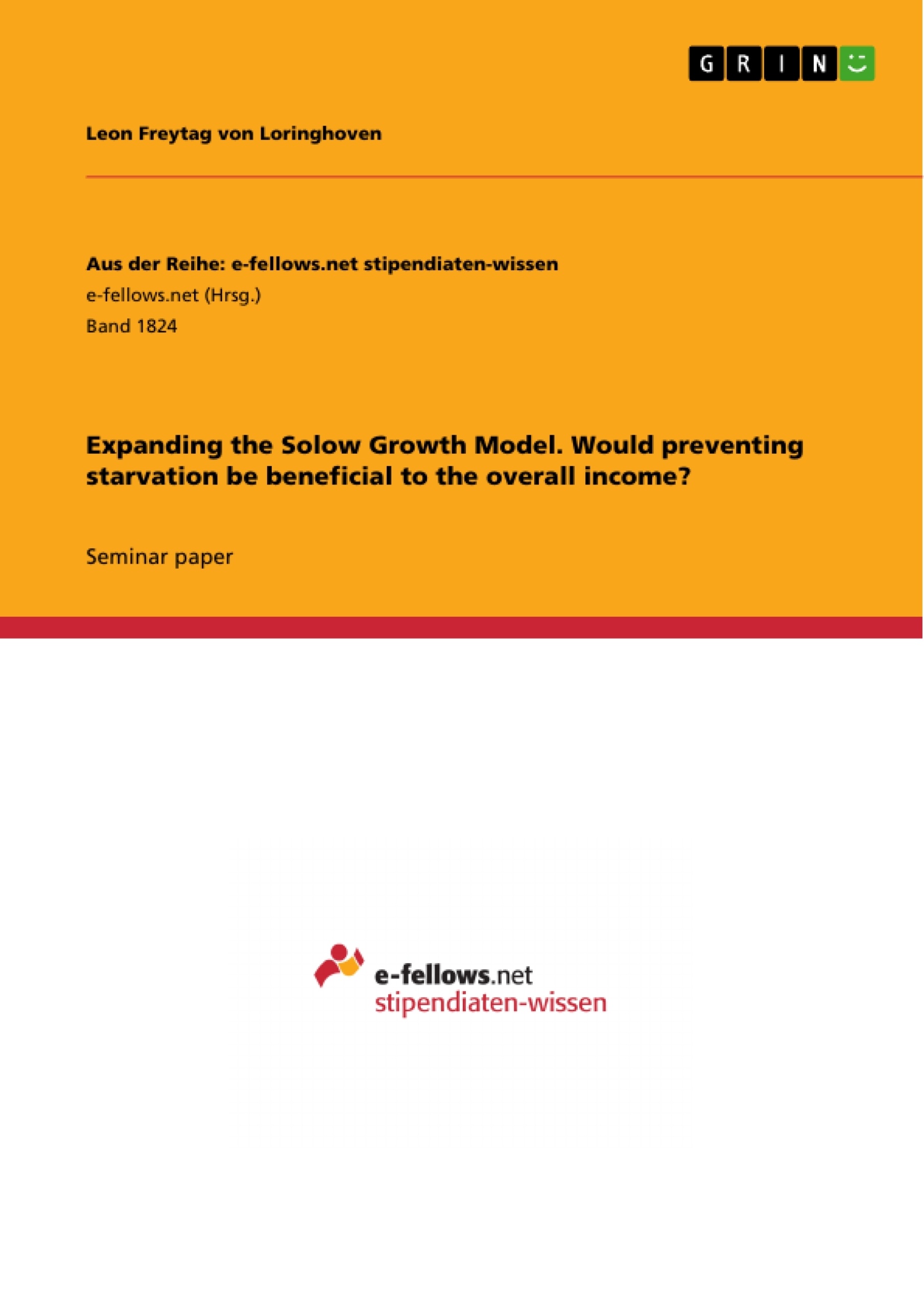The need for nutritional intake is probably the most fundamental physical need of human beings. Still, although many people have never experienced starvation, almost one billion in the world are suffering from malnourishment in our world. This is surely an undesirable condition itself. This paper further expands on the problem of malnourishment, by arguing that it decreases the effectiveness of labor and thus has a negative effect on total production and growth. There is wide evidence in the academic literature on the damaging effects of malnourishment, ranging from restricted human development, especially of children, to increased mortality rates. These papers have shown that starvation negatively affects both physical and mental abilities, which gives reason to assume decreased effectiveness of labor as a result of malnourishment.
According to the United Nations, we will define those suffering from malnourishment as the „people whose dietary energy consumption is continuously below a minimum dietary energy requirement for maintaining a healthy life and carrying out a light physical activity’’ (Patel, 2012).
The proposed model is intended to demonstrate that preventing starvation may be beneficial to overall income. It does notclaim thatreducinghungerdoesnot have othervalues.Aswearedealing with aglobal problem, the model will represent the world economy as one economy, so that national income equals global income.
Inhaltsverzeichnis (Table of Contents)
- 1. INTRODUCTION: STARVATION AND PRODUCTION
- 2. THE MODEL
- 3. IMPLICATIONS
- 4. LIMITATIONS
- 5. CONCLUSION
Zielsetzung und Themenschwerpunkte (Objectives and Key Themes)
This paper examines the relationship between starvation and production, arguing that malnutrition negatively impacts labor productivity, leading to decreased total production and economic growth. It explores this relationship through a modified Solow growth model, incorporating the effectiveness of poor workers' labor, influenced by their nutritional status.
- Impact of Malnourishment on Labor Productivity
- Economic Consequences of Starvation
- Modified Solow Growth Model
- Distribution of Income and Consumption
- Relationship between Income, Consumption, and Labor Effectiveness
Zusammenfassung der Kapitel (Chapter Summaries)
- 1. Introduction: Starvation and Production: This chapter introduces the problem of starvation and its connection to poverty, highlighting its impact on human development and labor productivity. It establishes the central argument that malnutrition negatively affects economic growth and production.
- 2. The Model: This chapter presents a modified version of the Solow growth model that incorporates the effectiveness of labor as a function of nutritional status. It introduces a new factor, ß, representing the effectiveness of poor workers' labor, which is influenced by their consumption levels and the required income for adequate nutrition.
Schlüsselwörter (Keywords)
The primary keywords and focus topics of this work include: starvation, malnutrition, labor productivity, economic growth, Solow growth model, distribution of income, consumption, and the effectiveness of labor.
- Arbeit zitieren
- Leon Freytag von Loringhoven (Autor:in), 2016, Expanding the Solow Growth Model. Would preventing starvation be beneficial to the overall income?, München, GRIN Verlag, https://www.grin.com/document/323807



